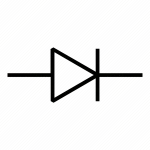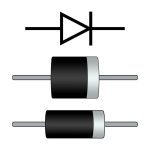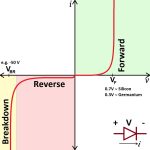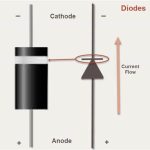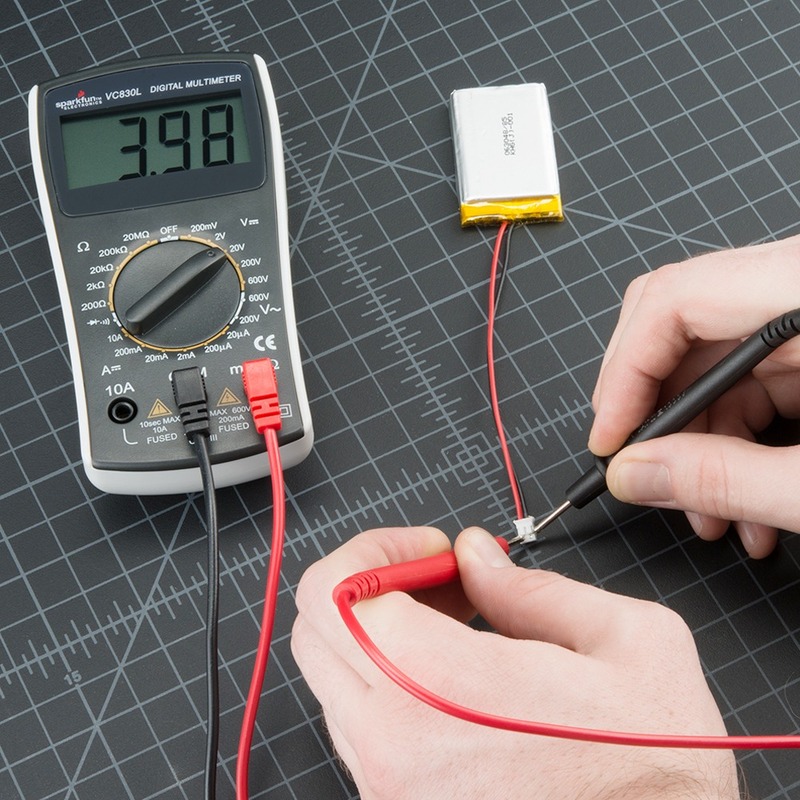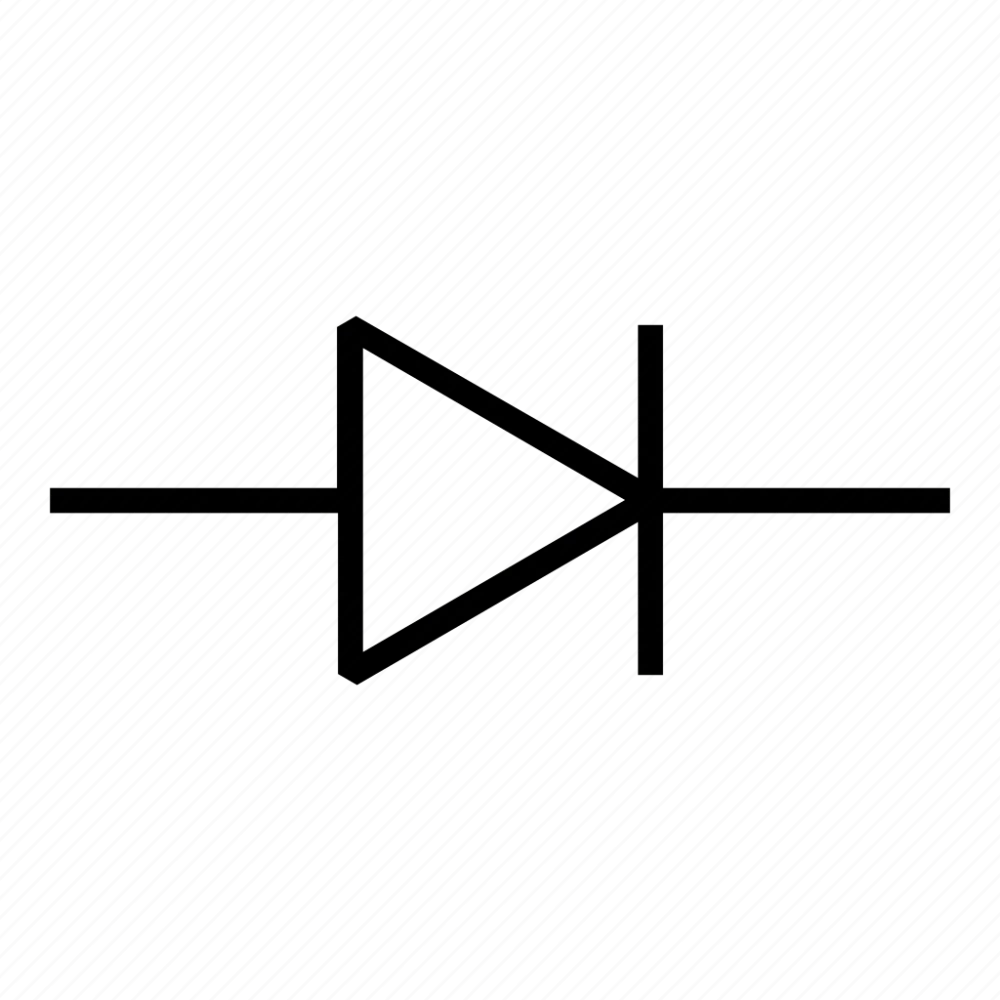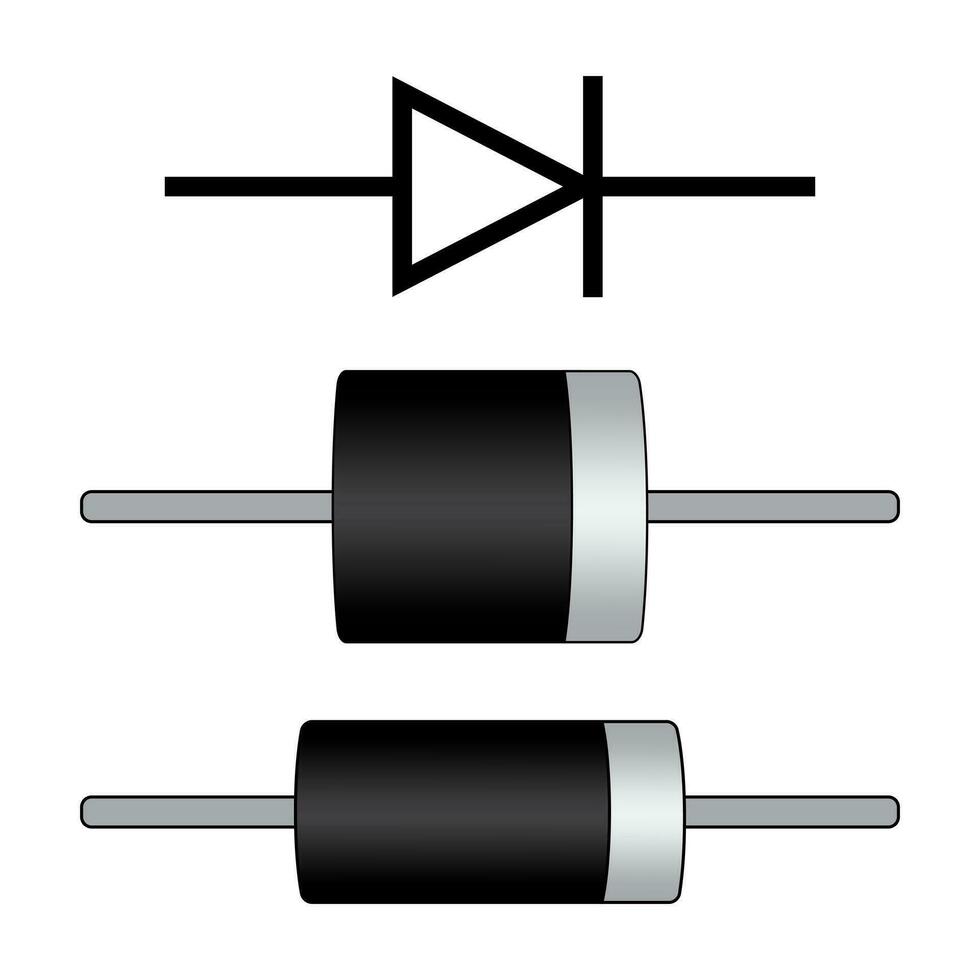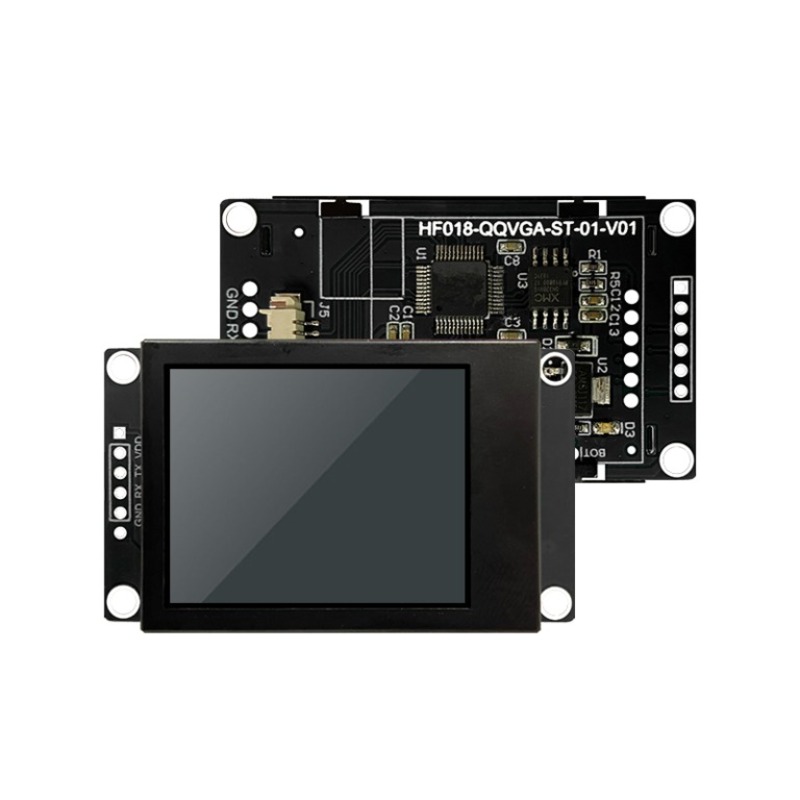Basics of Diodes: Introduction to Cathodes and Anodes
Before diving into the intricate world of diodes, one must understand its basic components: the cathode and anode. These are electrical contacts that determine the direction of current flow in a diode. The cathode is the negatively charged electrode through which current flows out of a device, while the anode is positively charged and allows current to flow into the device. When a diode is forward-biased, current flows from the anode to the cathode. Conversely, little to no current will flow if the diode is reverse-biased, as it blocks current in the opposite direction.
It’s crucial to distinguish between the two since their functionalities are at the core of diode behavior. Every diode has a cathode and anode, marked by a line near the cathode end in most cases. Diodes serve a multitude of applications because of their ability to control the direction of current, which is defined by the relationship between the cathode and anode. Identifying the cathode and anode is pivotal for correctly incorporating diodes into electronic circuits. Understanding the diode schematic is essential for proper circuit design. Correctly identifying the anode and cathode in the schematic ensures optimal diode functionality.
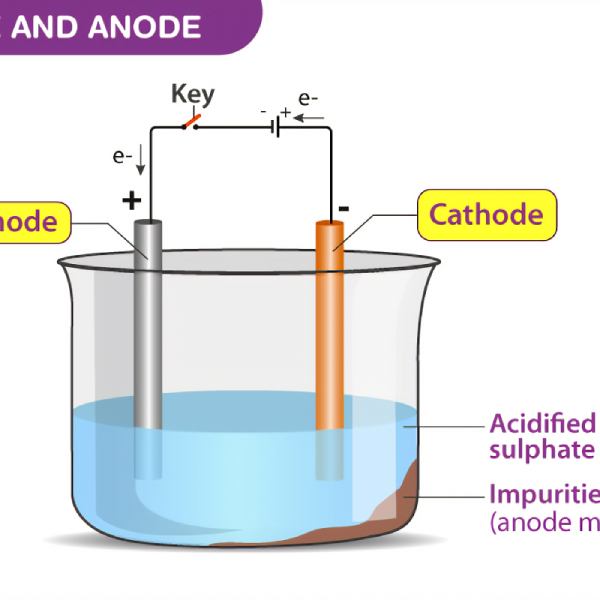
Understanding cathode and anode placement is key to leveraging a diode’s property of allowing current to flow in a single direction. In the following sections, we’ll delve deeper into diode functionality, explore the materials that make up a diode, and discuss various applications where the distinct roles of cathodes and anodes are essential.
Understanding Diode Functionality
To fully grasp how diodes function, it’s pivotal to focus on how they manipulate the flow of electricity. Essentially, diodes work as one-way valves for electric current, leveraging the properties of cathodes and anodes for controlled current direction. This characteristic allows diodes to convert alternating current (AC) into direct current (DC), a fundamental process in power supply units.
The core functionality of a diode relies on what is known as ‘junction behavior.’ When a diode is forward biased (positive voltage applied to the anode and negative to the cathode), it permits electricity to pass through. However, when reverse biased (negative voltage at the anode and positive at the cathode), it blocks the current. This selective conduction ensures that the current only flows in one desired direction, preventing potential damage to circuit components due to improper currents.
Effective use of a diode hinges on proper identification and application of the anode and cathode. Errors in this step can lead to circuit failures or suboptimal performance, underlining the importance of understanding cathode-anode dynamics. This principle is not only vital in power regulation but also in signal modulation and sensor technologies, where the precise control of current is critical. The diode laser wavelength is crucial for applications in communication and sensing, where precise current control ensures optimal performance. Understanding diode characteristics is essential for effective technology implementation.
By mastering diode functionality, one can enhance circuit design and troubleshoot more effectively. The diode’s behavior under different voltage scenarios exemplifies how integral the cathode-anode relationship is to a diode’s role in modern electronic devices.
Materials and Construction: What Makes Up a Diode?
The materials used in a diode determine its properties and functionality. Diodes mainly consist of semiconductor materials, such as silicon, germanium, or gallium arsenide. These materials are chosen for their ability to control electrical conductivity, a crucial aspect for the diode’s operation.
In constructing a diode, two differently-doped semiconductors are joined to form a p-n junction. The ‘p’ side contains an excess of holes (positive charge), and the ‘n’ side possesses an excess of electrons (negative charge). This structuring forms the basis of anode and cathode creation in the diode.
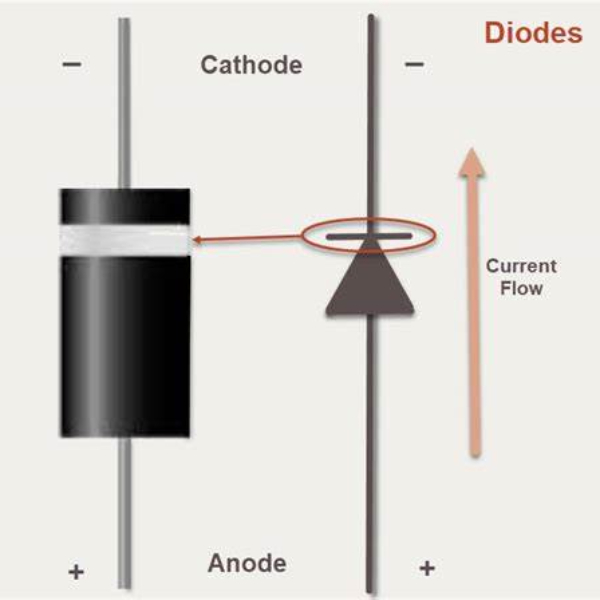
Manufacturers can mold diodes into various shapes and sizes, catering to specific needs. For example, small signal diodes, often encapsulated in glass or plastic, handle low currents. In contrast, power diodes, which manage higher currents, are typically encased in metal. When testing different types of diodes with a diode mode multimeter, it’s essential to consider their varied shapes and sizes based on their specific functions. Small signal diodes will show different readings than power diodes.
The construction methods and materials, such as the choice between silicon or gallium, depend on the intended use. These choices influence key characteristics like voltage capacity, current handling, and response speed. Understanding these components is essential for utilizing diodes efficiently in various applications.
Direction of Current Flow in Diodes
Understanding the direction of current flow in diodes is central to using them properly. In its simplest form, a diode is like a one-way street for electricity. It allows current to flow in one direction and blocks it in the other. This unique feature is due to the roles of the cathode and anode within the diode.
When the diode is forward-biased, meaning the anode is connected to a positive voltage and the cathode to a negative one, electricity is allowed to flow. Think of it as the green light that lets current pass from the anode to the cathode seamlessly. This is how diodes conduct and why they are crucial in circuits that require current to travel in a single direction.
If the diode is reverse-biased (with the anode attached to a negative voltage and the cathode to a positive one), the flow is blocked. This is the red light in the system, halting the current and preventing it from traveling in the opposite direction. This protective feature is what makes diodes invaluable in safeguarding electronic components.
Visualizing current flow in diodes is straightforward: electrons move from the negative side (cathode) to the positive one (anode). However, in conventional terms, we often say the current flows from anode to cathode, from positive to negative. Keep this convention in mind while working with diode circuitry.
The directional flow of current in diodes is fundamental to electronic design, ensuring that currents flow only where intended. This behavior is key to applications like power rectification, signal processing, and preventing backflow in circuits.
Applications of Cathode and Anode in Various Diodes
Cathodes and anodes play pivotal roles across various diode applications. Their unique properties and functions enable them to be used effectively in different electronic devices.
Rectifier Diodes
Rectifier diodes use anodes and cathodes to convert alternating current (AC) to direct current (DC). This process is crucial in power supply units. In these diodes, the anode accepts alternating current and, through the diode’s mechanism, outputs direct current from the cathode.
LED (Light Emitting Diode)
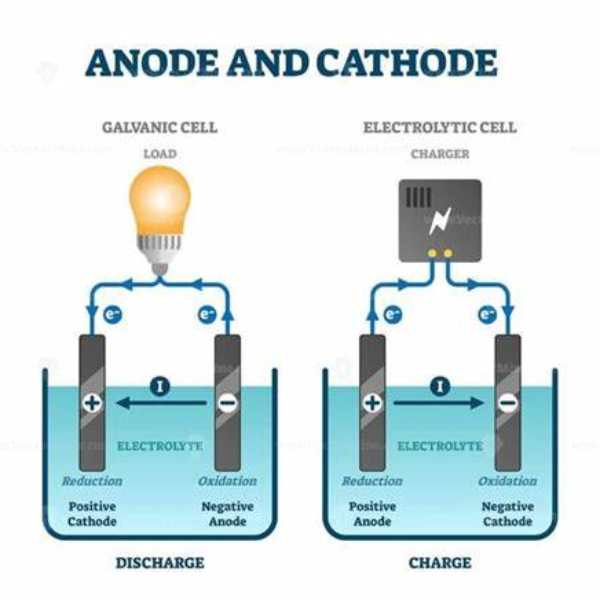
In LEDs, the cathode-anode relationship is key in converting electrical energy into light. The cathode in an LED is typically marked to indicate where the current exits, while the anode marks the entry point. This setup ensures that when the diode is forward-biased, light is emitted efficiently and brightly.
Zener Diodes
Zener diodes are essential for voltage regulation. They allow current to flow from anode to cathode under normal circumstances, but can also enable reverse current flow when voltage exceeds a certain threshold, thus protecting circuits from voltage spikes.
Photodiodes
Photodiodes use cathode and anode dynamics to convert light into electrical current. In these devices, light strikes the anode to initiate an electrical current, which then flows to the cathode, effectively translating light into a readable electrical signal.
Schottky Diodes
Schottky diodes, known for their low voltage drop and high-speed switching, employ cathodes and anodes to rectify signals with minimal loss of power. The anode is made from heavily-doped semiconductor material while the cathode is a metal, creating a barrier that enhances current flow efficiency.
By understanding the applications of cathodes and anodes, one can better leverage the specific properties of different diodes for optimum performance in electronic circuits and devices.
Key Differences Between Cathodes and Anodes
The cathode and anode are both critical to a diode’s function, but they serve different purposes. To understand their roles, let’s highlight the key differences between them.
Identification in Circuit Design
In circuit diagrams, anodes are typically represented by a triangle pointing towards a line, which signifies the cathode. The line near the cathode end of a diode marks its negative side.
Charge
Anodes are positively charged, attracting electrons, allowing current to flow into a device. Cathodes are negatively charged, repelling electrons, and current flows out from here.
Current Flow Direction
Current travels from the anode to the cathode when the diode is forward-biased. This is the opposite when reverse-biased, where the current flow is blocked.
Voltage Polarity during Operation
For a diode to conduct, the anode must be connected to positive voltage, and the cathode to negative. In reverse bias, the polarities are switched, preventing current flow.
Material Composition
Anodes are generally composed of a p-type semiconductor that has an abundance of holes (positive charge carriers). Cathodes consist of an n-type semiconductor, rich in electrons (negative charge carriers).
By considering these differences, professionals can better understand and utilize the cathode anode diode dynamics in various electronic applications.
Common Misconceptions About Cathode and Anode in Diodes
When discussing cathode anode diode dynamics, it’s not unusual to encounter some common misunderstandings. One such misconception is that cathodes always have a negative charge and anodes always positive. While this is true for diodes in a forward-biased condition, remember that anode and cathode roles are reversed when the diode is reverse-biased. Another confusion arises around current flow. It’s often believed that the current flows from the positive to the negative side. In reality, electron flow is from cathode to anode, but conventional current flow is considered from anode to cathode.
Some beginners also wrongly assume that the physical size of the cathode-anode markings indicates their functionality or capacity. Actually, these markings are merely for identification and have no bearing on the diode’s performance. Moreover, another fallacy is that diodes in reverse-bias don’t allow any current to pass at all. Small amounts of leakage current can still flow. Lastly, there’s a myth that any diode will work in any circuit. Diodes are designed for specific applications, and using the wrong type can lead to circuit failure.
Thus, it is important to understand the behavior of cathode anode diode configurations to avoid these misconceptions influencing circuit design and troubleshooting.
Troubleshooting and Maintenance of Diodes
Troubleshooting and maintaining diodes is critical for optimal circuit function. Effective maintenance can prevent failures and enhance device longevity. Here are key aspects to remember when dealing with diodes.
Identifying Diode Issues
To troubleshoot diodes, start by checking visual signs. Look for discoloration or damage that might suggest overheating. Use a multimeter in diode mode to check if the diode conducts current only one way. A diode that conducts in both directions, or blocks in both, is faulty.
Replacing a Diode
If you find a non-functioning diode, turn off power before replacing. Unsolder the broken diode, taking care not to damage the board. Solder a new diode in place, matching cathode anode polarization correctly.
Preventive Measures
To maintain diodes, ensure they’re not overloaded with voltage or current. Follow manufacturer guidelines for usage limits. Use proper heat sinks to dissipate heat and prevent thermal damage.
Regular Testing
Schedule regular testing of diodes in high-use circuits. This can help catch issues before they lead to failure. Use the multimeter to confirm proper functioning during regular maintenance checks.
By applying these troubleshooting and maintenance practices, diodes will operate reliably, protecting circuits and ensuring steady performance.

